Bio-degradable cards
Every card imaginable!
|
Bio-degradable cards Every card imaginable! Assistance Dogs and Public Transport: What the Rules SayNavigating public transport with your assistance dog can sometimes feel a little bit daunting, even with all the positive changes we've seen. You might find yourself wondering exactly what your rights are, what to expect from different types of transport across the UK, and how best to handle situations if things don't quite go to plan. This comprehensive guide is here to clear up any confusion, providing you with all the essential, accurate information you need to travel confidently and smoothly with your incredible canine companion. We truly understand that knowing the rules and feeling prepared can make a huge difference to your journey, so let's delve into everything you need to know to make your travels as stress-free and enjoyable as possible.
Table of Contents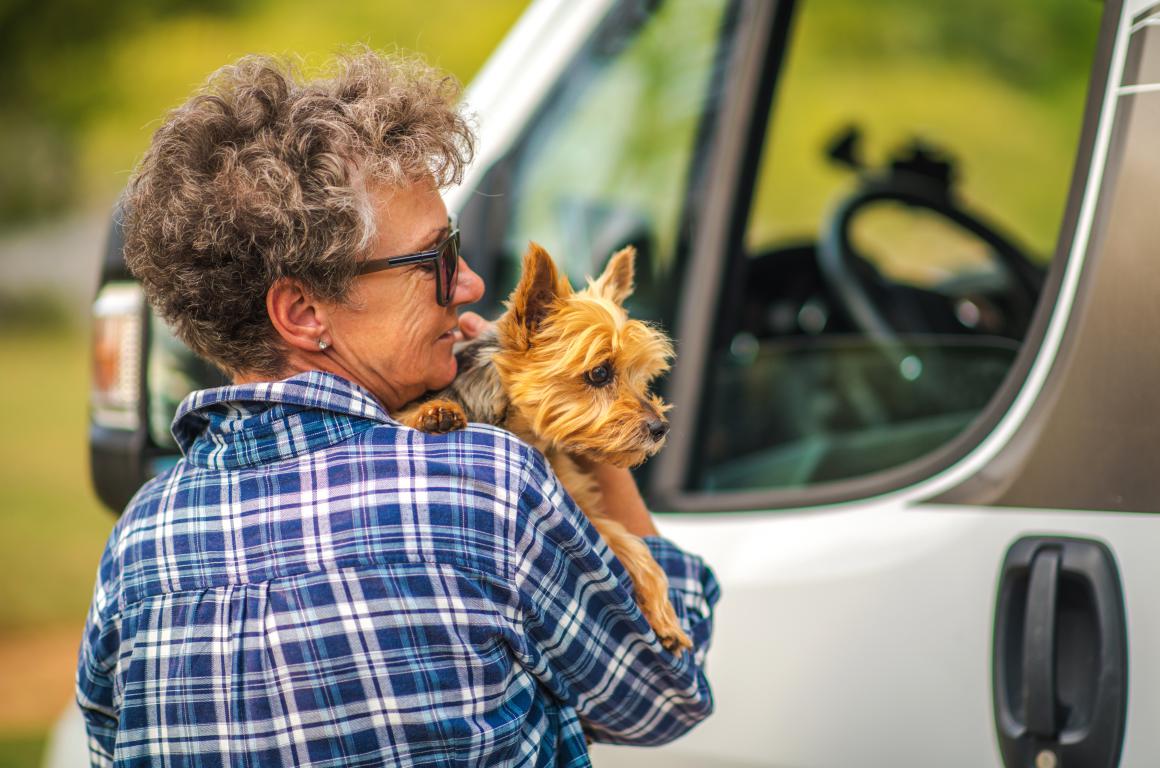
Understanding Your Rights: The Equality Act 2010 and Specific Transport LawsWhen it comes to you, your assistance dog, and public transport in the UK, your rights are firmly protected by law. The most significant piece of legislation is the Equality Act 2010. This Act makes it unlawful to discriminate against a person because of their disability and requires service providers, including transport operators, to make "reasonable adjustments" to ensure you're not put at a substantial disadvantage. For assistance dog users, this generally means a legal right of access to services and premises, including all forms of public transport. However, it's really important to understand that alongside the broad protections of the Equality Act, there are also some specific transport regulations, like those concerning buses and taxis, which carry their own, sometimes more precise, definitions of what counts as an "assistance dog" for the purpose of mandatory carriage. These specific rules help to make sure your right to travel is undeniable. What the Equality Act Means for YouThe Equality Act makes it clear that transport providers cannot treat you unfavourably because you have a disability or because you are accompanied by an assistance dog. Your assistance dog isn't a pet; they are a vital aid that enables you to carry out daily activities, including travel, and should be treated as such. You should expect the same level of service and comfort as any other passenger, and your dog should be allowed to accompany you in passenger areas without an extra charge. The Duty to Make 'Reasonable Adjustments'A core principle of the Equality Act is the duty for service providers to make 'reasonable adjustments'. This means they must take proactive steps to remove barriers that might otherwise prevent you from using their services. For assistance dog users, this almost always translates to allowing your dog to accompany you in areas where ordinary pets would be excluded, provided your dog is well-behaved and under your control. What's considered 'reasonable' can depend on the specific circumstances, but allowing an assistance dog to travel with you is almost universally deemed a reasonable adjustment, as long as it doesn't fundamentally compromise health and safety, which is exceptionally rare. Specific Transport Regulations: What Counts as an Assistance Dog for Mandatory CarriageFor certain types of public transport, particularly buses, coaches, taxis, and private hire vehicles, there are specific regulations (like the Public Service Vehicles Accessibility Regulations 2000 and the Disability Discrimination Act 1995 for taxis, both as amended) that give a more precise definition of what legally counts as an assistance dog for the purpose of mandatory carriage. This means that drivers and operators must carry these dogs, without exception (unless the driver has a valid medical exemption for taxis, which we'll discuss later). According to these specific laws, the only dogs that count as an assistance dog for these transport types are ones that have been trained either:
The term "specified charity" generally refers to those organisations that are members of Assistance Dogs International (ADI) or the International Guide Dog Federation (IGDF, which operate to high standards of training and client support. If your assistance dog is from one of these organisations, you are firmly covered by these mandatory carriage rules on buses, coaches, and taxis. Your Responsibilities as an Assistance Dog UserWhile the law grants you significant rights, it's also important to remember your responsibilities. Your assistance dog should always be under your control, well-behaved, and not pose a risk or nuisance to other passengers or staff. This includes ensuring your dog is clean, quiet, and remains with you, ideally sitting or lying down, without obstructing aisles, seats, or emergency exits. It's also generally expected that your dog is house-trained. Being a responsible assistance dog owner helps to maintain the excellent reputation of assistance dogs and ensures continued smooth access for everyone. What About Other Passengers?Occasionally, other passengers might express concerns, perhaps due to allergies or phobias. While these concerns are understandable, they do not override your legal right to travel with your assistance dog. Transport providers have a duty to balance the needs of all passengers. Often, this can be managed by staff suggesting another passenger moves seats or by finding you a suitable spot where your dog can lie quietly out of the way. The primary legal duty is to ensure you, as a person with a disability, are not discriminated against. 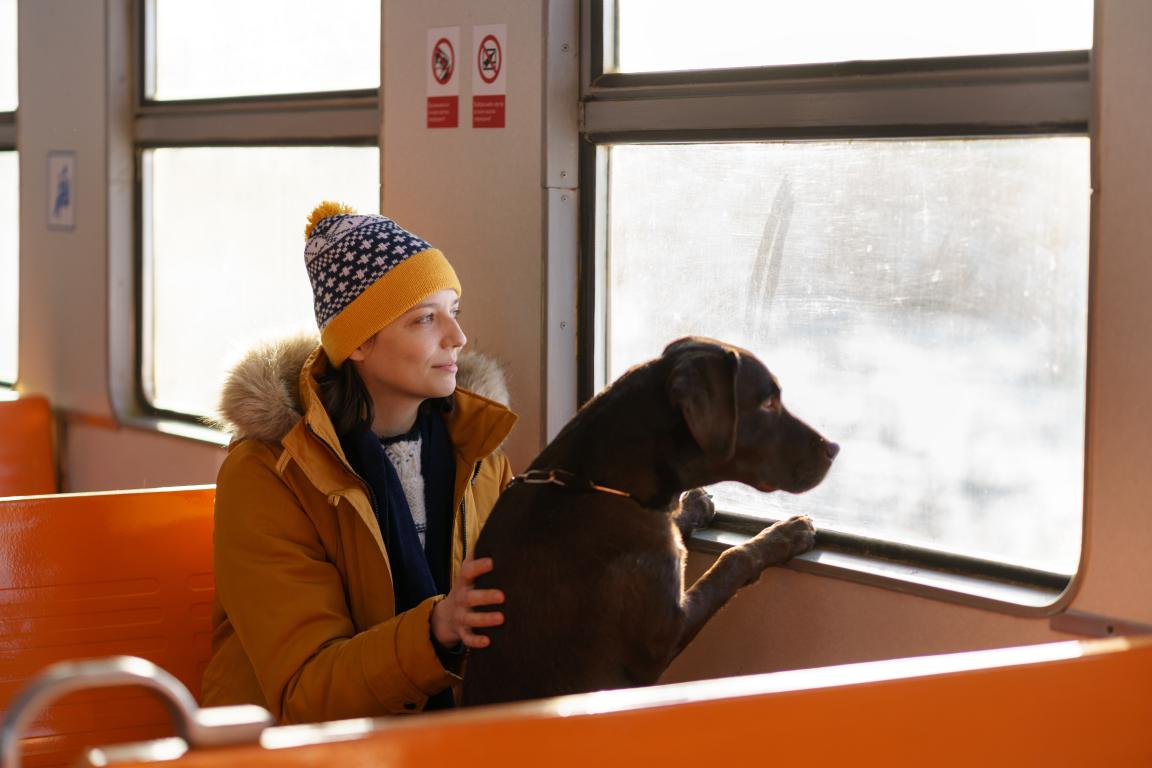
Travelling by Bus with Your Assistance DogBuses are an incredibly common and essential form of public transport for many, and it's absolutely vital that assistance dog users can access them without any issues. In the UK, the rules are very clear: assistance dogs, as defined by the specific transport regulations, are legally required to be allowed on buses and coaches. This right is enshrined in legislation such as the Public Service Vehicles Accessibility Regulations 2000, meaning bus companies cannot legally refuse entry to you and your assistance dog if they fall within the specified categories. They are required to make reasonable adjustments to ensure you can use their services just like any other passenger. Understanding the Law for Buses and CoachesAs we covered, for bus and coach travel, the law is specific. The only dogs that count as an assistance dog for the purpose of mandatory carriage are those trained to guide a blind person, help a deaf person, or trained by a specified charity to help someone with a disability affecting epilepsy, mobility, manual dexterity, physical co-ordination, or the ability to lift, carry, or move everyday objects. If your assistance dog fits this definition, the bus company and driver must allow you to travel. They cannot charge extra for your dog. General Bus Company PoliciesAlmost all bus operators in the UK have policies that reflect these legal requirements, explicitly stating that assistance dogs are permitted on board. These policies will often highlight that the dog must be clearly identifiable as an assistance dog, usually by wearing a harness, vest, or lead slip, and must be well-behaved and under the control of its owner. The bus driver and other staff are expected to facilitate your journey, not impede it. It's important to remember that these rules are distinct from those for pet dogs, which are often not permitted or only allowed under strict conditions at the driver's discretion. Boarding and Seating on BusesWhen boarding a bus, your assistance dog should be able to accompany you into the main passenger area. You should aim to find a spot where your dog can lie down safely without blocking the aisle or emergency exits. Often, the designated wheelchair spaces can be a good option if they are not in use by a wheelchair user, as they tend to provide ample room. However, you are not limited to this space and can use any available seat, with your dog lying calmly at your feet. Bus drivers should not ask you to sit in a specific area if it's not practical or if there's a more suitable space elsewhere. Your dog should not occupy a passenger seat. Fare and IdentificationAssistance dogs always travel free of charge on all buses in the UK; there is never a fare for them. While you don't legally need specific identification for your dog beyond their training and function, carrying an assistance dog ID card and ensuring your dog wears a recognisable harness or vest can be incredibly helpful. It provides quick visual confirmation to staff and other passengers that your dog is an assistance dog and not a pet, which can often prevent misunderstandings and make your journey smoother. Dealing with Other Passengers on BusesBuses can get crowded, and occasionally, other passengers might react to your dog, whether out of curiosity, fear, or allergies. Bus drivers and staff are generally trained to handle these situations. If another passenger expresses discomfort, staff should aim to facilitate a solution that respects both your legal right to travel and the other passenger's concerns, perhaps by suggesting they move to another part of the bus. However, your right to travel with your assistance dog takes precedence. The driver cannot refuse your travel on account of another passenger's discomfort. Best Practices for Bus Travel
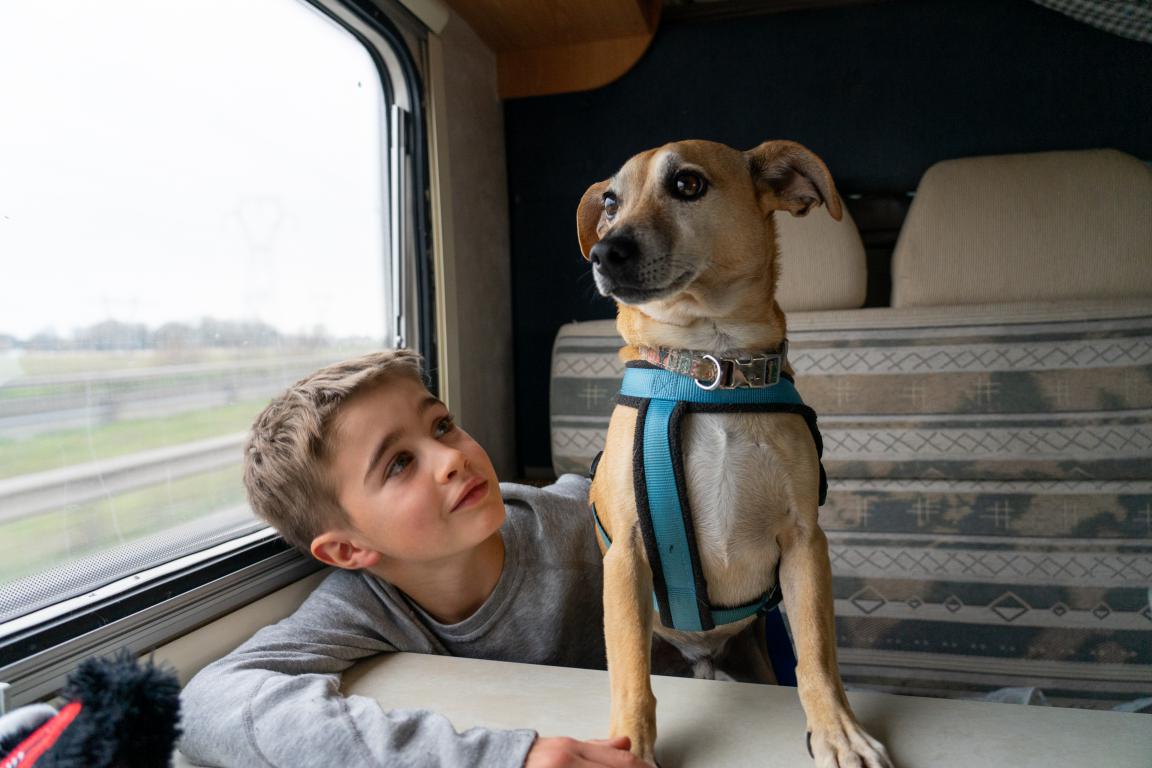
Travelling by Train with Your Assistance DogTrains offer a fantastic way to travel across the UK, covering long distances comfortably and efficiently. For assistance dog users, the good news is that rail companies are fully compliant with the Equality Act 2010, meaning your assistance dog is welcome on all train services. This includes local, regional, and intercity trains operated by National Rail, as well as the London Underground, Overground, DLR, and other city metro systems. You have the right to travel with your assistance dog in any carriage, including first class, without any extra charge. National Rail Conditions of CarriageAll train operating companies in the UK operate under the National Rail Conditions of Carriage. These conditions explicitly state that assistance dogs are permitted to travel free of charge. They outline that the dog must be kept under control, on a lead, and not cause a nuisance or obstruction. It also clarifies that the dog is welcome in all areas of the train, provided there is space for them to lie down comfortably without blocking aisles or doorways. This applies to all recognised assistance dogs under the broader scope of the Equality Act. Seating and Space on TrainsTrains generally offer more space than buses, which can make travel with an assistance dog quite comfortable. You can sit in any available seat, and your dog should lie calmly at your feet. Many trains have designated priority seats or areas near doors that might offer a bit more room. If you are travelling a long distance, or on a particularly busy service, it might be helpful to reserve a seat. Most train companies allow you to indicate you are travelling with an assistance dog when booking, which can help staff allocate a suitable spot if needed. Your dog should not occupy a seat themselves. London Underground and Other Metro SystemsThe rules for the London Underground, Overground, DLR, and other city metro systems are the same: all recognised assistance dogs are permitted on all services and in all stations. On busy services, it's particularly important to keep your dog close and ensure they are not blocking the flow of passengers, especially during peak hours. Escalators can sometimes be a concern for dogs; if your dog isn't comfortable or trained for them, always look for lifts or stairs. Station staff are usually available and happy to help you find an alternative route if needed. International Train Travel (Eurostar)If you're planning to travel internationally via Eurostar, the rules are unfortunately different and stricter due to international pet travel regulations and border controls. As of the most current information, Eurostar does not permit assistance dogs, or any animals, to travel on their services, with the sole exception of guide dogs for blind passengers travelling between the UK and France. This is a significant point to remember: if your assistance dog is for a different disability, or if you are travelling to another destination via Eurostar, you would unfortunately be unable to use their service. It is always, always recommended to check their most up-to-date policy directly with Eurostar well in advance of planning any international train journeys. Assistance at Stations and BoardingTrain station staff are generally very helpful and can provide assistance with boarding and alighting the train, especially if you need a ramp or guidance to your seat. Please don't hesitate to ask for help; it's part of the reasonable adjustments they are expected to provide under the Equality Act. Many stations also have assistance points or dedicated staff to ensure smooth travel for passengers with disabilities. It can be helpful to book assistance in advance, especially for longer journeys or if you have specific needs. Best Practices for Train Travel
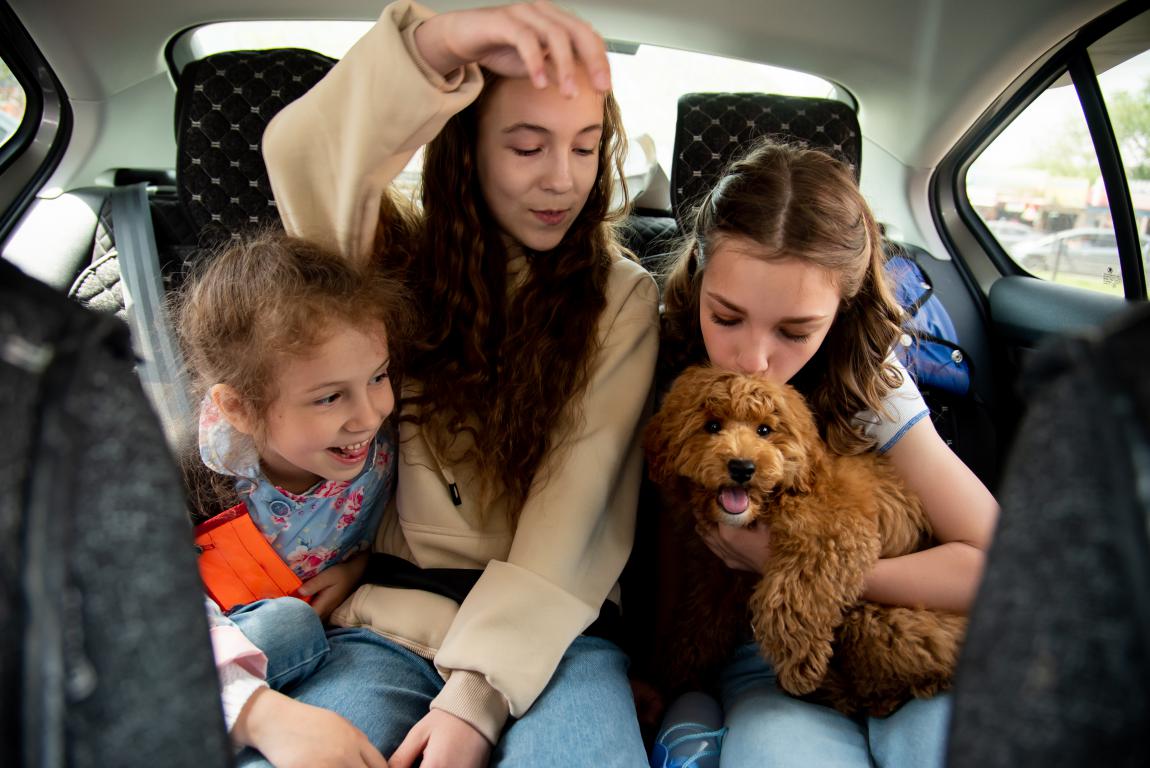
Travelling by Taxi and Private Hire Vehicles with Your Assistance DogTaxis and private hire vehicles (PHVs), which include services like Uber or local minicabs, offer incredibly convenient door-to-door transport. For assistance dog users, it's absolutely crucial that you can access these services without issues. The law in the UK is very clear on this: taxi and private hire vehicle drivers must carry assistance dogs and their owners. This is a specific duty outlined in sections 168 and 170 of the Equality Act 2010. Drivers cannot refuse to carry an assistance dog, nor can they charge extra for doing so. The Driver's Legal ObligationUnder the Equality Act 2010, and specific regulations for taxis and PHVs, a driver has a legal duty to:
The definition of an "assistance dog" for these mandatory carriage rules is the same as for buses: dogs trained to guide a blind person, help a deaf person, or trained by a specified charity to help someone with a disability related to epilepsy, mobility, manual dexterity, physical co-ordination, or the ability to lift, carry, or move everyday objects. If your assistance dog fits this definition, the driver must accept your journey. Exemption for DriversThe only exception to this rule is if the driver holds a valid medical exemption certificate from their local authority. This is usually granted due to a genuine and severe allergy to dogs that would make it a health risk for them to carry an assistance dog. If a driver claims an exemption, they must be able to show you their certificate. Even in such cases, the driver's operator (the taxi firm or private hire company) still has a duty to provide a suitable alternative driver and vehicle to ensure you can complete your journey. They cannot simply refuse your booking outright. Identifying an Assistance DogWhile there's no legal requirement for your dog to wear specific identification, having your assistance dog in a recognisable harness, vest, or lead slip greatly helps in quickly establishing their status. This visual cue can prevent misunderstandings and unnecessary questions from drivers. It also helps to clearly differentiate your dog from a pet, which drivers are generally not legally obligated to carry (though many do). Carrying an official ID card from your assistance dog organisation can also be very helpful. What to Do if a Driver Refuses AccessUnfortunately, despite the clear law, instances of drivers unlawfully refusing to carry assistance dog users still occur. If this happens to you, it's important to know what steps to take:
Refusing an assistance dog without a valid legal reason is not just poor service; it is unlawful discrimination. By standing up for your rights, you're not only ensuring your own access but also helping to pave the way for a more inclusive and understanding public transport system for all assistance dog users. 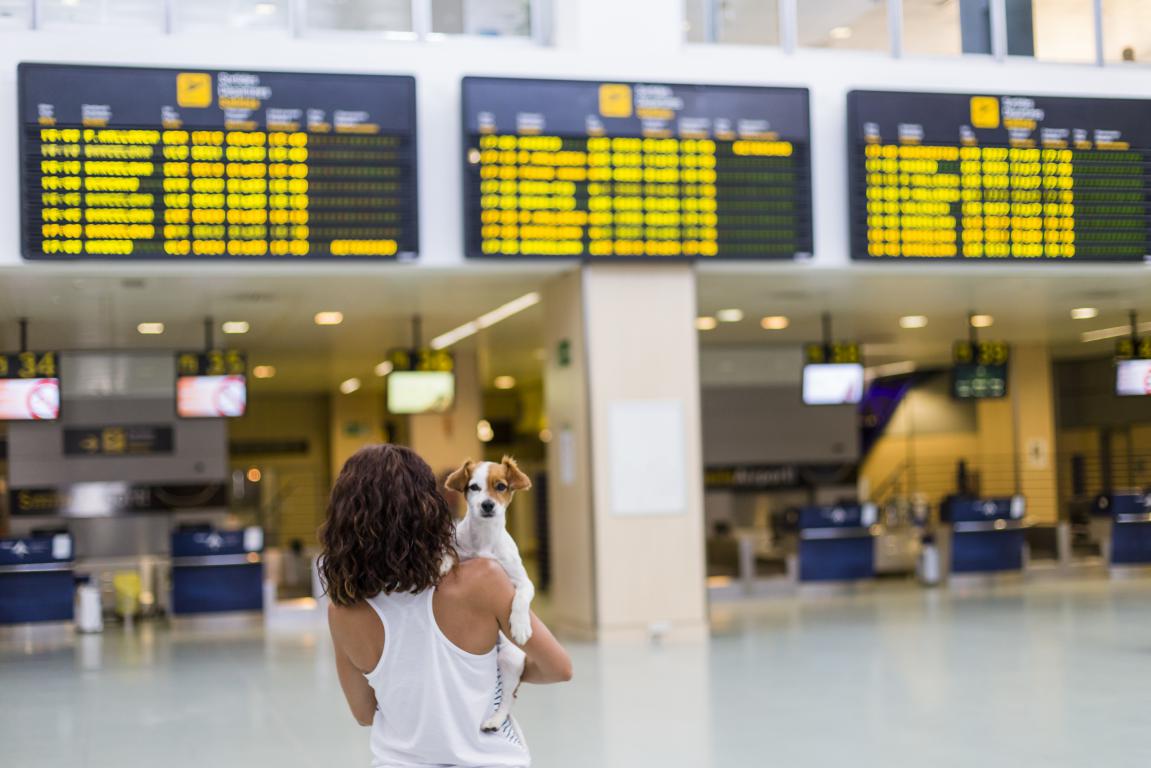
Travelling by Aeroplane with Your Assistance DogFlying with an assistance dog involves a bit more planning and adherence to international regulations, but it is absolutely possible and guaranteed by law for recognised assistance dogs. Within the UK, domestic flights generally follow similar principles to other transport, while international flights have specific health and entry requirements for animals, usually governed by the Pet Travel Scheme (PETS) for journeys to and from the UK. Domestic Flights Within the UKFor flights entirely within the UK, airlines are generally required to permit recognised assistance dogs in the aircraft cabin with their owner. This falls squarely under the remit of the Equality Act 2010. Your dog will usually be expected to lie at your feet or under the seat in front of you, without obstructing the aisle or emergency exits. It's crucial to contact your airline well in advance – usually at least 48 hours before your flight – to inform them you will be travelling with an assistance dog. This allows them to make the necessary arrangements and ensures you have a suitable seat that can accommodate your dog safely and comfortably. International Flights and the Pet Travel Scheme (PETS)International travel with an assistance dog is significantly more complex due to varying country entry requirements and animal health regulations. For journeys to and from the UK and the EU, the Pet Travel Scheme (PETS) is the primary framework. To bring an assistance dog into the UK, or to take them to an EU country, your dog must meet specific health requirements. Please be aware that these requirements can change, so always check the latest government guidance (gov.uk) and consult your vet well in advance:
Crucially, not all airlines permit assistance dogs on international flights, and some only allow them on specific routes, or under specific conditions, even if they meet PETS requirements. It's absolutely imperative to:
The In-Cabin vs. Hold DebateFor recognised assistance dogs, the expectation and legal right (where applicable) is generally for them to travel in the cabin with you. However, some airlines, especially on certain international routes, or with larger assistance dogs, might still insist on the dog travelling in the temperature-controlled hold. This is a point to clarify with your airline at the time of booking. If an airline insists on hold travel for a recognised assistance dog on a route where cabin travel is usually permitted, you may need to discuss this with them and assert your rights under disability discrimination laws, though international air travel regulations can sometimes complicate these matters. It's vital to have all your dog's official documentation readily available to support your case. Airport SecurityAt the airport, you and your assistance dog will go through security like all other passengers. Your dog may need to be walked through the metal detector separately from you or be subject to a hand search. Security staff are generally well-versed in procedures for assistance dogs, but it's always helpful to be prepared, cooperative, and follow their instructions. You might be asked to remove your dog's harness for the scanner. Before and During the Flight
Best Practices for Air Travel
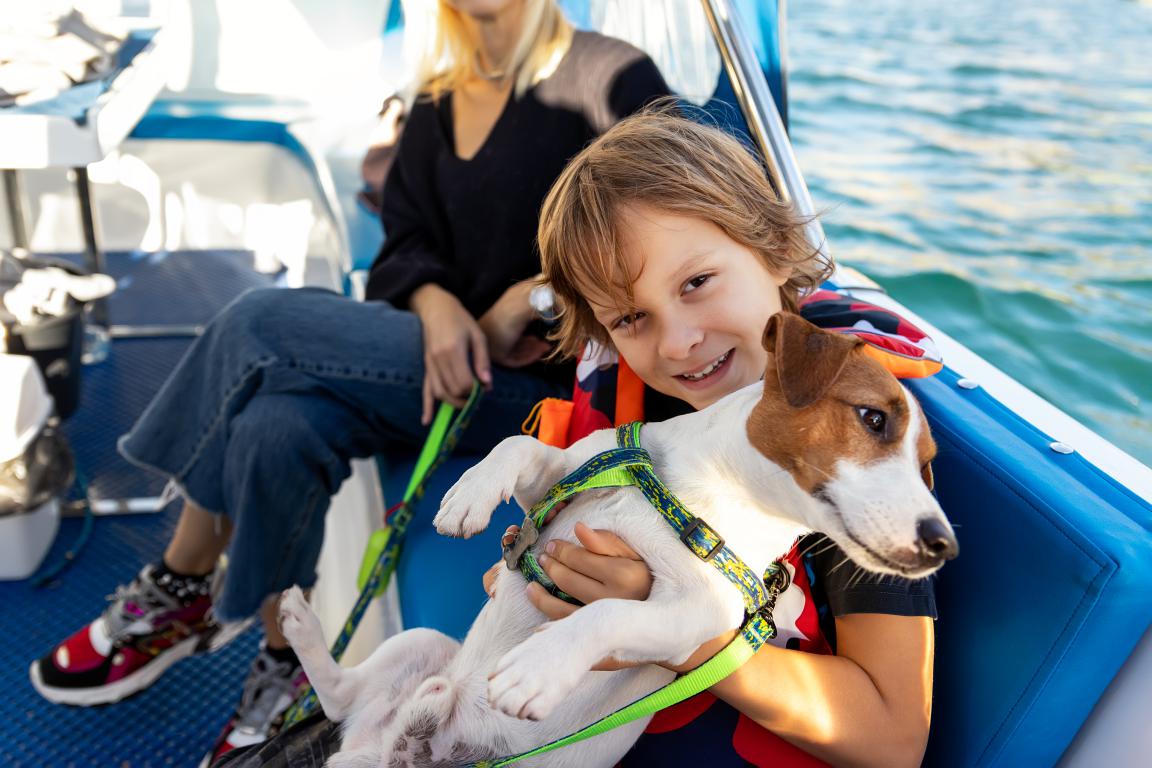
Travelling by Ferry and Other Water Transport with Your Assistance DogWater transport, from local ferries and canal boats to larger international passenger ships, forms another important part of the UK's public transport network. The good news is that, consistent with the Equality Act 2010, recognised assistance dogs are generally permitted on all forms of water transport in the UK. This means you should be able to travel alongside your dog, usually in the passenger lounges and deck areas, without restriction or extra charge, provided your dog is well-behaved. UK Domestic Ferries and River BoatsFor journeys entirely within the UK, such as cross-channel ferries between England and the Isle of Wight, or local river bus services, operators are obliged to allow assistance dogs. They are not considered pets and are welcomed in all passenger areas, including restaurants, shops, and cabins (if applicable), provided they are well-behaved and under control.
International Ferries and Cruise ShipsTravelling on international ferries (for example, to Ireland, France, or other European destinations) or cruise ships introduces additional complexities, similar to air travel, due to international animal health regulations and the specific policies of the operating company and destination country.
Other Water Transport (Canal Boats, Smaller Vessels)For smaller, independent water transport operators, like canal boat trips, local pleasure cruises, or water taxis, the same principles of the Equality Act apply. They must allow your assistance dog. However, due to the potentially smaller size of some vessels, it's always courteous and helpful to give them a call in advance to discuss practicalities. This ensures there's adequate and safe space for your dog to be comfortable during the journey, and allows the operator to make any necessary minor adjustments. Best Practices for Water Travel
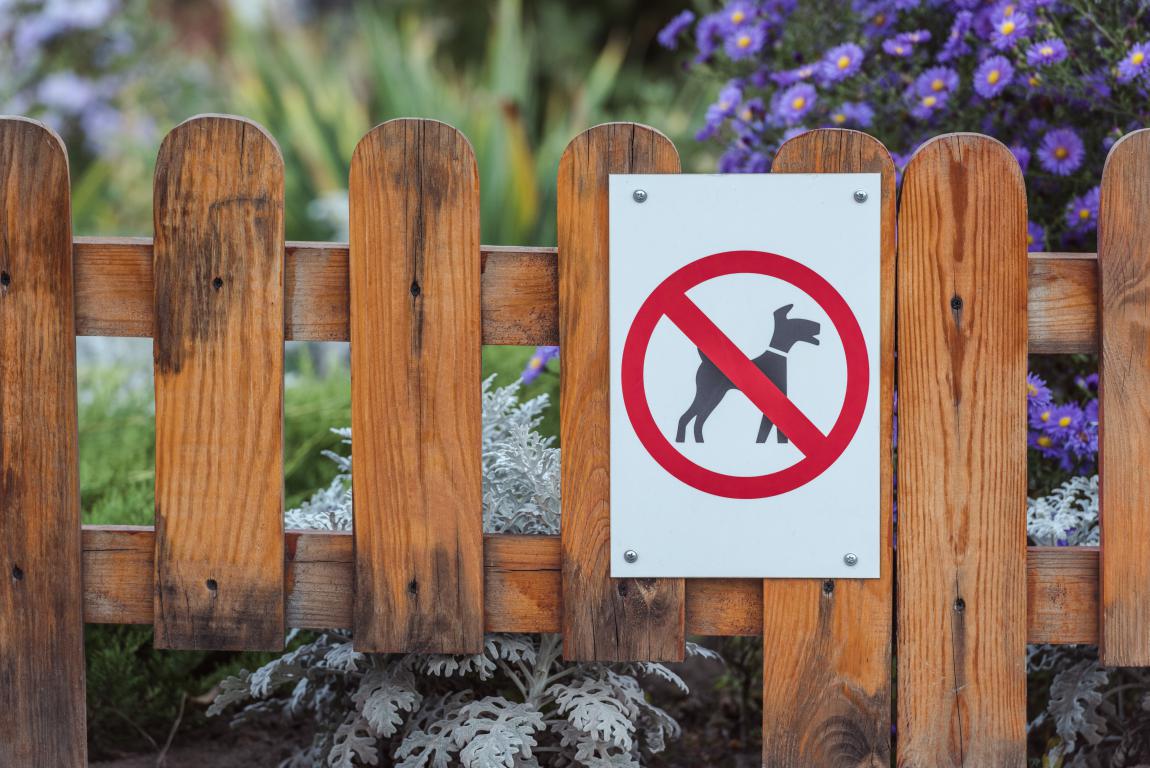
What to Do if You're Refused AccessDespite the clear legal protections for assistance dog users, instances of unlawful refusal to access public transport unfortunately still happen. It can be incredibly frustrating, upsetting, and even isolating when you're simply trying to go about your day with your vital companion. Knowing exactly what steps to take if you encounter a refusal is essential to assert your rights and also to help prevent similar incidents from happening to other assistance dog users in the future. Staying Calm and InformingYour first step, although sometimes challenging in the moment, is to try and remain calm and composed. Politely explain to the staff member (be it a bus driver, train conductor, ticket agent, taxi driver, or airline staff) that your dog is a trained assistance dog and that under the Equality Act 2010 (and specific transport regulations, where applicable), they are legally obliged to allow you access. Emphasise that assistance dogs are not pets and have a legal right to accompany you. Sometimes, staff may genuinely be misinformed or simply unaware of the specific regulations for assistance dogs. A calm, clear explanation can often resolve the situation there and then. Gathering Information is KeyIf the refusal persists after you've explained your rights, you'll need to gather as much specific information as possible to make a formal complaint. This detailed information is absolutely crucial for any follow-up action and strengthens your case significantly:
Making a Formal ComplaintOnce you have gathered all the relevant information, it's time to make a formal complaint. This is a vital step in ensuring accountability and upholding your rights:
Seeking Support and AdviceYou don't have to go through this alone. There are organisations that can provide invaluable support and advice:
Remember, refusing an assistance dog without a valid legal reason is not just poor service; it is unlawful discrimination. By standing up for your rights, you're not only ensuring your own access but also helping to pave the way for a more inclusive and understanding public transport system for all assistance dog users. 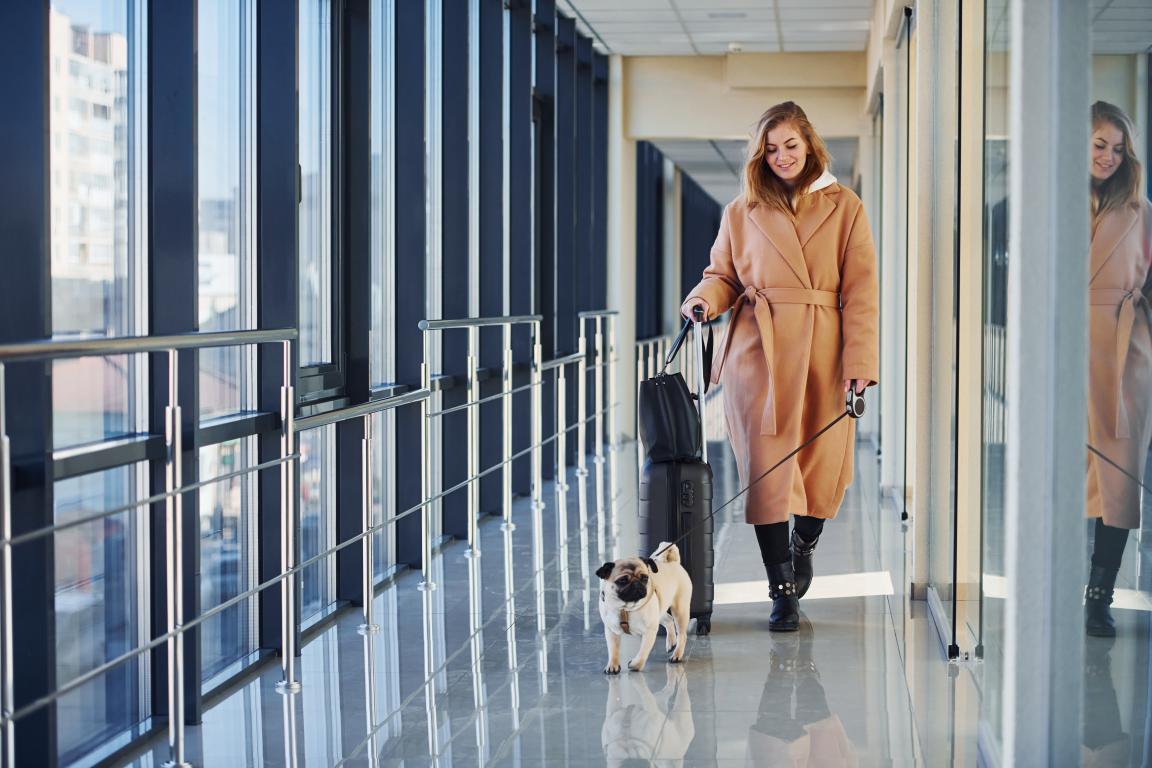
|